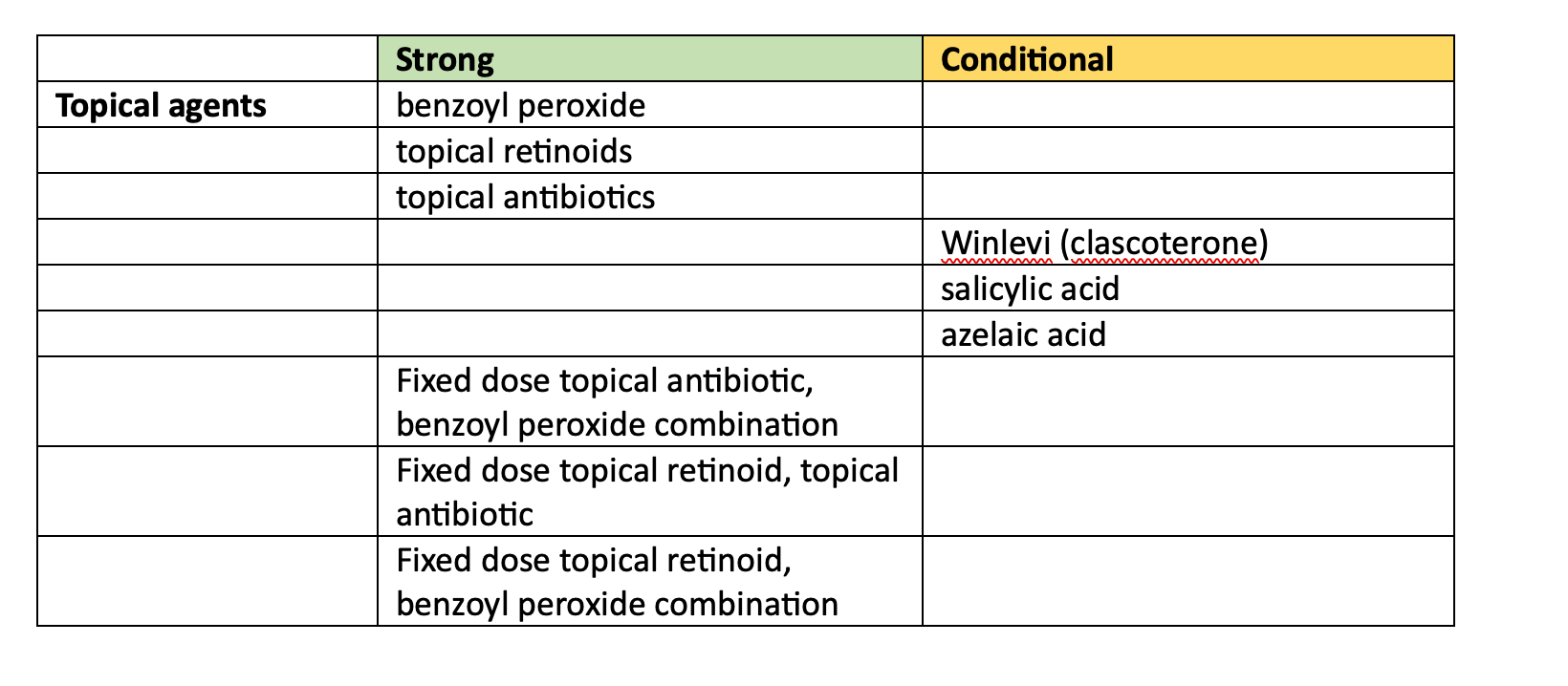New AAD Acne Guidelines Warn About High Cost, Access to New Treatments
New acne guidelines from the American Academy of Dermatology recommend Winlevi (clascoterone), a topical treatment, and Seysara (sarecycline), a narrow-spectrum tetracycline, but qualify the recommendation as conditional because of concerns that the high cost may affect equitable access to treatment,
The American Academy of Dermatology has issued updated guidelines for the treatment of acne that strongly recommend many of the mainstays of acne care but also boost some new expensive treatments that may challenge payer coverage policies.
The guidelines include some cautionary language about the use of systemic antibiotics leading to antibiotic resistance and other antibiotic-associated complications, noting that in 2021 dermatologists prescribed more oral antibiotics per clinician than any other specialty group and that most of the antibiotics were for acne treatment.
The guidelines, an update of 2016 recommendations, endorse the use of Winlevi (clascoterone), a topical antiandrogen that was approved by the FDA in 2020. The guidelines categorize the “certainty of evidence” for Winlevi (pronounced WIN-lev-ee) as high but give it conditional recommendation, citing high cost that “may impact equitable acne treatment access.” A 60-gram tube of Winlevi was priced on GoodRx at $603.95 today.
Seysara (sarecycline), a narrow-spectrum tetracycline antibiotic approved as an acne treatment by the FDA in 2018, was also recommended but, like Winlevi, conditionally, and for the same reason: high cost and an impact on equitable access. A 30-day supply of Seysara (pronounced SAY-sara) priced at $1,089.19 on GoodRx today.
The guidelines were published as a 30-page piece in the Journal of American Academy of Dermatology on Jan. 30.
John S. Barbieri, M.D., MBA

In an email response today to questions from Managed Healthcare Executive about the guidelines, John Barbieri, M.D., MBA, co-chair of the working group that wrote the guidelines and an assistant professor at Harvard Medical School and the director of the Advanced Acne Therapeutics Clinic at the Brigham and Women’s Hospital in Boston, said that Winlevi is the first FDA-approved treatment that can address hormonal causes of acne in both men and women and has a complementary mechanism of action with other acne topical treatments. Seysara, he wrote, might have some advantages over other oral antibiotics used for acne, such as doxycycline and minocycline.
“It will be important for payers to provide coverage to ensure that patients have access to these valuable new treatments,” Barbieri commented.
Barbieri and the other guideline writers also conditionally recommended minocycline and azithromycin as systemic antibiotics for acne while strongly recommending doxycycline. According to Barbieri, minocycline and doxycycline are currently prescribed in equally for acne but that may change with these guidelines. There is no evidence to suggest minocycline is more effective than doxycycline, according to Barbieri, and the guidelines mention rare potential adverse effects, including vertigo, autoimmune hepatitis, drug-induced lupus, and hyperpigmentation.
“We should consider whether reducing use of minocycline might be beneficial to our overall care of patients with acne,” Barbieri wrote.
In addition to recommendations, the guidelines have “good practice statement” that add some nuance to the recommendations. Limiting the use of systemic antibiotic “when possible” because of antibiotic resistance is one of those good practice statements. Another one is a suggestion to monitor patients taking isotretinoin for severe acne with liver function and lipid tests but not complete blood count tests in otherwise healthy patients.
The guidelines say that it is important to individualize acne treatment with shared decision-making because of the many treatment choices. But they also include a schematic that emphasizes that mild cases mild cases be treated with topical treatments with systematic antibiotics, hormone agents and isotretinoin reserved for moderate to severe cases. Here is a list of the six topical treatments that were strongly recommended and three that were conditionally recommended:

And here are the recommendations for systemic antibiotics:

Note that doxycycline is the only one that is strongly recommended.
The guidelines say that that there isn’t enough evidence to develop recommendations for many of the of “physical modalities” use to treat acne, such as acne lesion extraction, chemical peels, microneedle radiofrequency devices and laser and light-based therapies. But Barbieri and his colleagues recommended against adding pneumatic broadband light to adapalene gel, pointing to research showing that it did not reduce acne lesions and was associated with hyperpigmentation and purpura.
The recommendation against was qualified as being conditional.
The guidelines take the stance of evidence being sufficient to pass judgment on complementary and alternative therapies, such as topical tea tree oil, topical green tea, oral pantothenic acid or topical niacinamide.
The results on a low-glycemic load diet are inconsistent, say the guidelines: Several randomized trials show beneficial effects on acne, but they cite one with 84 subjects that did not. The verdict on low-dairy, low whey, omega-3 acids and chocolate was no recommendation for insufficient evidence.
Experts Explore Causes and Care for Chronic Itch
April 22nd 2025In a recent discussion with Managed Healthcare Executive, three leading dermatologists and itch experts—Shawn Kwatra, M.D., Brian Kim, M.D., and Gil Yosipovitch, M.D.—shared where the science is going, what’s holding it back and how the healthcare system can better support patients.
Read More
Insights Into Chronic Itch From Shawn Kwatra, M.D.
April 15th 2025A Q&A between Shawn Kwatra, M.D., professor and chair of dermatology at the University of Maryland School of Medicine, and Managed Healthcare Executive about new discoveries in chronic itch, how treatment options are improving and the challenges patients face in getting access to the right therapies.
Read More
Phase 3 Trials of Oral Povorcitinib Show Positive Results in Hidradenitis Suppurativa
March 24th 2025A new drug application for povorcitinib is expected to be filed in late 2025 to early 2026 to treat adult patients with moderate to severe hidradenitis suppurativa, a chronic and painful inflammatory skin condition.
Read More